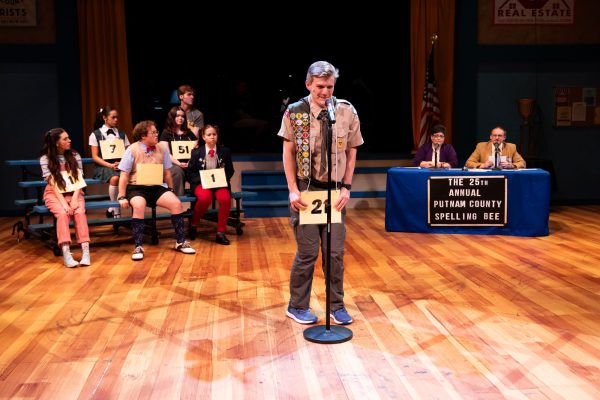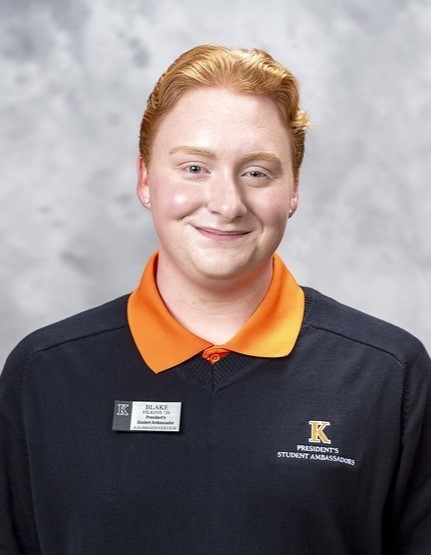

Kalamazoo College’s Delta Chapter of Phi Beta Kappa welcomed 38 new members on June 12, 2024, recognizing their exceptional scholastic achievements across a wide range of disciplines.
Founded in 1776, Phi Beta Kappa is the nation’s oldest and most prestigious academic honor society, boasting 17 U.S. Presidents, 42 U.S. Supreme Court Justices, and more than 150 Nobel Laureates among their ranks. The society’s mission is “to champion education in the liberal arts and sciences, to recognize academic excellence, and to foster freedom of thought and expression.” The Delta of Michigan chapter was founded in 1958.
Acceptance into Phi Beta Kappa is considered one of the highest academic honors a student can receive. The society is known for its rigorous selection process that evaluates students’ achievements across the arts, natural sciences, humanities and social sciences.
As these talented seniors embark on the next chapter of their educational and professional journeys, their Phi Beta Kappa membership will serve as a symbol of their exceptional accomplishments and dedication to the pursuit of knowledge.
Please join us in congratulating the following students:
- Kelley Akerley of Hancock, New Hampshire; biochemistry and German majors
- Shahriar Akhavan Tafti of Tehran, Iran; computer science major, minors in psychology and German, neuroscience concentration
- Liz Ballinger of Grosse Pointe Woods, Michigan; psychology and French majors, studio art minor
- Jenna Beach of Vicksburg, Michigan; biochemistry major, psychology minor
- Jonah Beurkens of Byron Center, Michigan; physics and computer science/math majors
- Katherine Black of Grass Lake, Michigan; biology major, Spanish minor, neuroscience concentration
- Madeleine Coffman of Portage, Michigan; biochemistry major, psychology minor
- Ryan Drew of Niles, Michigan; Women, Gender and Sexuality major, psychology minor
- Andreas Fathalla of Troy, Michigan; business major, Chinese minor
- Morgan Fischer of St. Michael, Minnesota; psychology and Spanish majors
- Nikhil Gandikota of Cary, North Carolina; economics major
- Aliza Garcia of Kalamazoo, Michigan; Spanish, German and computer science majors
- Sophie Haas of Traverse City, Michigan; biology major, psychology minor, community and global health and neuroscience concentrations
- Emma Hahn of Farmington, Michigan; economics major
- Emily Haigh of Kalamazoo, Michigan; biology and computer science majors, mathematics minor
- Lukas Hultberg of Kalamazoo, Michigan; economics and mathematics majors
- Madeline Hurley of Grosse Pointe Farms, Michigan; biochemistry major
- Ella Kelly of Grand Rapids, Michigan; chemistry and French majors, mathematics minor
- Mahum Khan of Kalamazoo, Michigan; biology major, community and global health concentration
- Rhys Koellmann of Midland, Michigan; biochemistry major, anthropology and sociology minor, and biological physics concentration
- Teresa Lucas of Mattawan, Michigan; German and psychology majors
- Lina Moghrabi of Kalamazoo, Michigan; philosophy and psychology majors
- Anna Murphy of Royal Oak, Michigan; biology major, psychology minor
- Blagoja Naskovski of Skopje, North Macedonia; quantitative economics major
- Matthew Nelson of Kalamazoo, Michigan; mathematics and physics majors
- Elizabeth Nestle of St. Joseph, Michigan; psychology major, Chinese minor
- Sydney Pickell of Thompsonville, Michigan; business major, psychology minor
- Megan Ploucha of Commerce Township, Michigan; biochemistry and Spanish majors
- Roman Ramos of San Diego, California; biochemistry major
- Hannah Schurman of Rochester Hills, Michigan; biology major, studio art minor
- Steven Shelton of South Lyon, Michigan; chemistry major
- Xavier Silva of Portage, Michigan; mathematics and computer science majors
- Allison Sokacz of Macomb, Michigan; biology major, Spanish minor
- Camran Stack of Ithaca, Michigan; political science and German majors
- Danielle Treyger of West Bloomfield, Michigan; business and Spanish majors
- Maria Tripodis of Cleveland, Ohio; studio art major, art and psychology minors
- Ifeoma Uwaje of Saginaw, Michigan; biochemistry major
- Jordyn Wilson of Kalamazoo, Michigan; biochemistry major












































































